REVIEW: Grim Guardians: Demon Purge - More Than a Skin Deep Affair
Gal Gunning for Demons
This isn’t what it looks like! Or maybe it is, it’s hard to say what exactly this looks like. Grim Guardians: Demon Purge looks like Castlevania. Its characters look like they are from Gal Gun (because they are). Looks rarely tell the full story, however, especially at first glance. Grim Guardians deserves a look beyond the surface, as its exploration of its source material is more than skin deep.
First and foremost, Grim Guardians obviously evokes Castlevania. While it certainly looks the part, it also captures what distinguishes Castlevania from its platforming contemporaries. In many platformers, levels primarily emphasize jumping from one platform to the next. You know, platforming. Enemies simply hinder your ability to do that successfully, like a heckler swooping in from backstage to distract from the main event. In a Castlevania game, platforming and enemies switch roles – enemies take center stage while the platforming spices up the battles
Although you may not literally be platforming, many of the same principles in spacing and timing still apply. Enemies take multiple hits, which prolongs battles and encourages mastery of their tricks. You need to move in specific ways and time your hits carefully, lest you get knocked into a conveniently placed bottomless pit. Pits and spikes generally exist more to punish you for making a combat mistake than jumping incorrectly. Castlevania games will often throw you into completely horizontal hallways without any real platforming at all because of this enemy-first design focus. This distinguishing characteristic likely led to Castlevania’s relatively seamless transition from a stage-based deathmarch to an exploratory game that deemphasizes your platforming prowess.
Grim Guardians similarly emphasizes this enemy-first philosophy with its level design and especially its core mechanic: character switching. As you explore the game’s school-turned-demon-castle, you can freely swap between the game’s protagonists, Maya and Shinobu. Maya slices enemies from up close, while Shinobu guns them down from a distance. Basically, each character excels at a different range. Maya deals high damage up close, while running a higher risk of taking damage as a result. Shinobu’s guns allow you to keep your distance, yet that safe distance comes at the cost of lower damage. These trade-offs form the key strategy at play in Grim Guardians.
The tag system complements the Castlevania design philosophy well. Moment-to-moment gameplay already involves careful positioning, and the tag system pushes that concept even further. Since each character specializes at a different range, you need to consider which character suits the situation best. While that idea could potentially simplify the game too much, your abilities are balanced in a way that keeps fights interesting even when you go into battle with the “correct” solution. For example, even with a gun, Shinobu’s range fails to cover the entire screen, so you may still need to enter an enemy’s range of attack to land damage.
Each character carries a unique arsenal of subweapons with them, which further incentivizes switching things up. The subweapon selection may actually be my favorite aspect of the game. They offer far more versatility than traditional Castlevania selection.
Shinobu’s grappling hook stands out to me the most. As a weapon, you can use it to pull enemies towards you, which helps to close the distance for a quick swap to Maya. If your enemy happens to be standing precariously next to a bottomless pit, however, you can simply pull them straight off the ledge. More exciting than anything to do with combat, you can also use it to grapple onto ceilings and swing around, allowing you to reach new nooks and crannies of the castle.
The creativity offered by the characters and their massive arsenals is the most compelling trait of Grim Guardians. Nearly every tool and upgrade expands the game in exciting ways. I often think of Castlevania games as very rigid, tightly designed experiences. Their controls and mechanics limit your options to simple and easy to understand gameplay. Grim Guardians utilizes similar ideas and then runs wild into a crazier direction. The simple fact that you can swap between both your characters and all of your subweapons at any time makes it clear that the game has no desire to limit you. Instead, it encourages you to try out all of your options and use whatever you find the most fun.
At a mechanical level, Grim Guardians expertly builds on the Castlevania formula. Of course, Castlevania means different things depending on who you ask. It’s a series that split its identity in two structurally different directions. Some may prefer the level-based original run of games, others the more exploration-focused back half of the series.
Although Grim Guardians may seem to favor the old-school structure, that turns out to only be a skin deep assertion. The game progresses on a linear, stage by stage basis. However, these seemingly straight lines hide more branches and secrets than may be apparent on your first run through them. In fact, the majority of alternative paths are initially blocked off from you until you progress the story and unlock more subweapons. Certain circumstances unfold during the game that give you ample reason to revisit levels and uncover these secrets later on. In its own odd little way, Grim Guardians captures both styles of Castlevania, with the first playthrough focusing on the original style and subsequent playthroughs opening the scope of the game wide open.
This combination of styles gives the structure of Grim Guardians a unique flair, the disparate parts just don’t mesh seamlessly. Students in need of rescue and upgrades for your characters encourage you to tread off the beaten path. In order to locate them, you can activate a radar sense that points you in the general direction of where the secret may be.
The radar helps, but it isn’t perfect. It only shows nearby secrets, so if you aren’t in close proximity, you have to wander through different stage paths hoping you stumble upon something new. This wandering can be especially frustrating if you aren’t sure you’re actually missing anything at all. A universally great solution may not exist for this problem; if you give the player too clear of directions, that ruins the point of exploring at all. I think I would have settled for a clear indicator of how many collectibles I still needed to find in each level.
Some of the challenges tied to grabbing these secrets also shift the focus of the level design so dramatically that it can feel like you’re playing a different game. Earlier I mentioned a bunch of nonsense about enemies being the priority over the actual platforming. Some of these secret paths swerve that focus hard into the platforming. There are some extended sequences that test your proficiency in ways the rest of the game simply doesn’t. It’s not the end of the world for the game to momentarily shift focus, it just comes across as jarring when so much of the game focuses elsewhere. The tag system offers a bit of a safety net for these sudden difficulty spikes, as dying as one character gives you the opportunity to run back to the start of that section and revive them for another try, it’s just not a graceful solution.
Despite some blowback from it, I overall enjoyed this exploration twist anyway. It makes you think about the game differently on subsequent playthroughs and effectively rewards you for your efforts. Upgrades bolster Maya and Shinobu into satisfyingly strong killing machines, which makes flying through the stages a breeze. As most fans of the game’s developer, Inti Creates, likely expect, thorough exploration will also lead to alternate endings. I ran into a few road bumps with how the game handles its exploration elements, but ultimately enjoyed the final destination.
Uneven exploration is one thing; what may cause more trepidation is this game’s ties to Gal Gun. Your tolerance on that may vary, I didn’t mind it. This isn’t a game where you’ll need a panic button in case your mom walks in. For the most part, Grim Guardians carries over Gal Gun’s sense of humor more than anything else. The game’s characters handle its more perverse jokes and concepts with an almost endearing, deadpan acceptance. I found it amusing if nothing else.
It may seem odd to say, but stuff like that is a big part of why I respect Grim Guardians. Many developers try to recreate old games and there’s nothing wrong with doing that. These kinds of games just rarely go more than skin deep in the process – by recreating what came before, developers run the risk of failing to let their own personality shine through. Inti Creates takes what works about classic games and pushes them into new directions. They leave their mark on these classic formulas, whether that’s through tying them to Gal Gun, mixing up the structure, or throwing so many options at you that it fundamentally changes how you approach the game.
You may not like every idea Grim Guardians throws out there, but it’s hard to deny the passion behind its tosses. It confidently pushes the boundaries of its inspirations into creative and fun directions. If you give it a chance, you’ll find that Grim Guardians offers much more than a skin deep affair between Castlevania and Gal Gun.
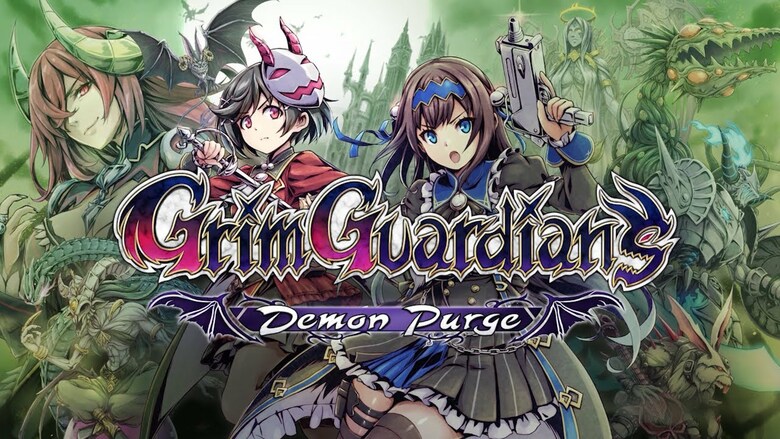
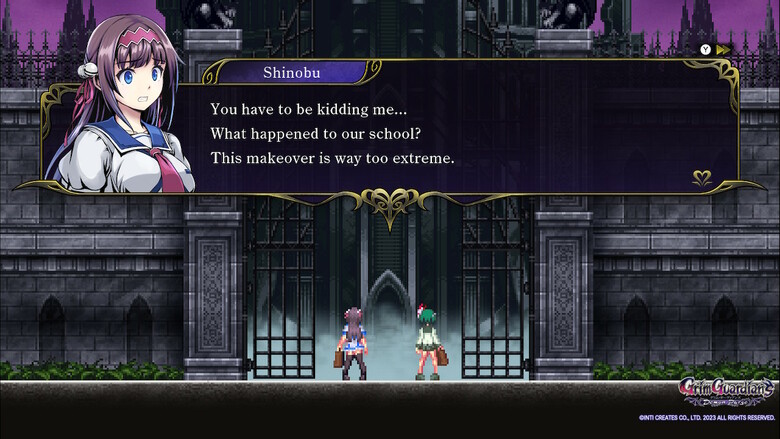
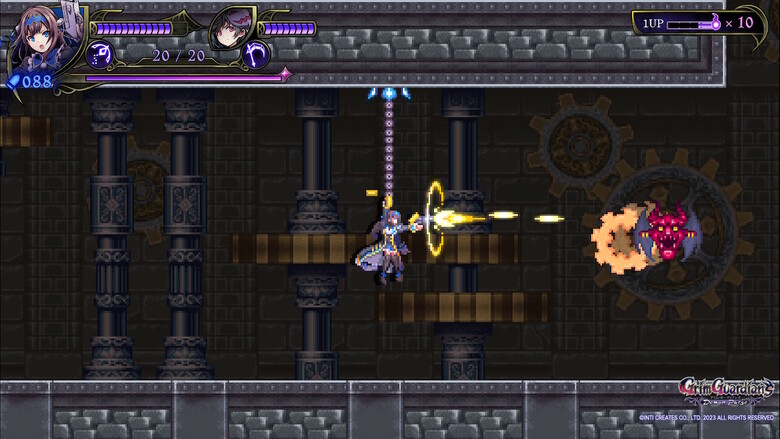
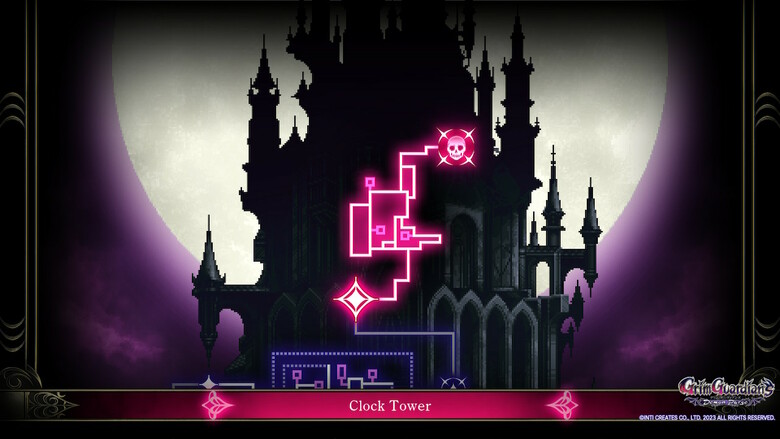
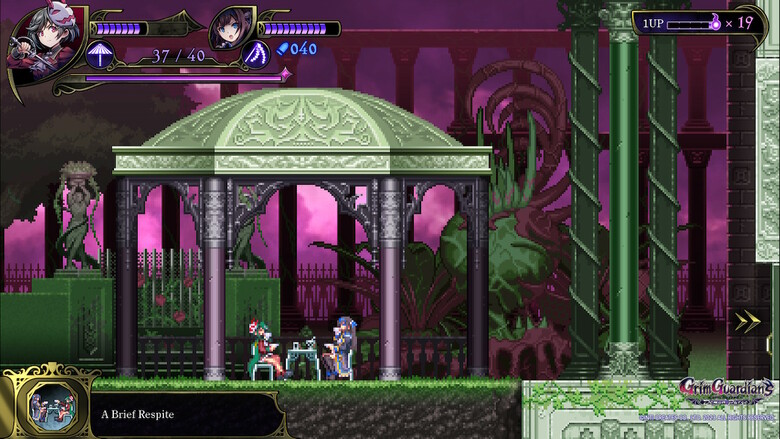
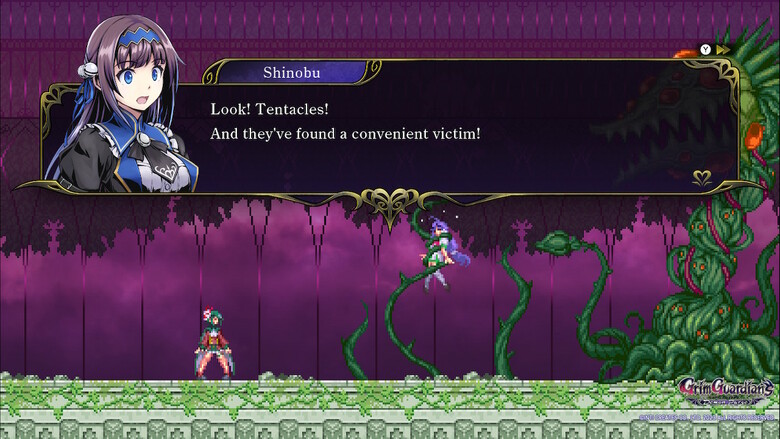
Comments (2)